Search results
7 results found.
7 results found.
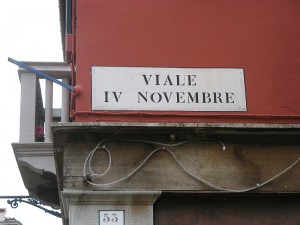
At 3:00 PM on November 4, 1918, peace returned to Italy. After 41 months of brutal battles on the Eastern Front, Italy and its allies had defeated the Austro-Hungarian Empire.
The Armistice of Villa Giusti had been signed the previous day by representatives of the Italian and Austro-Hungarian governments at a country house outside Padova, and it stipulated the precise moment at which hostilities were to cease. It sounds so elegant — “cease hostilities” — so much more imposing than saying “No more blowing millions of young men to splinters and shreds.”

The armistice between France and Germany which ended the War on the Western Front was signed in Compiegne, France on November 11. I remember commemorating Armistice Day on that date, before it was transformed into Veterans Day (decreed on June 1, 1954). In Italy, November 4 is observed as the Day of National Unity and the Armed Forces. Meaningful, but not poetic at all.
Of course I’m in favor of honoring everyone in uniform, but labels that are so generic muffle the profound resonance the end of the Great War, or as it’s sometimes called here, “The War of Fifteen-Eighteen,” had — and I believe still has — in European culture and history.
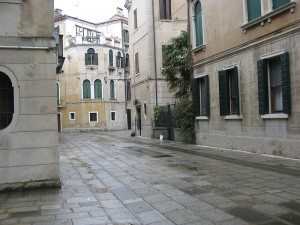
In Venice, part of the war’s aftermath was the construction of housing for veterans on a large swathe of empty land on the island known as Sant’ Elena at the easternmost end of Venice. It has always seemed a fairly bleak area to me (especially on one of those dark, foggy winter evenings).
But what the neighborhood may lack in charm it more than compensates for in the echoes still reverberating through the names of its streets — names of battles or battlefields, or generals, or dates so crucial that they need no explanation whatever to anyone in Italy. And certainly not to the families moving in.
Lest anyone imagine that Venice might have escaped any effects of the war, let me note that the city was bombed by the Austrians more than once. Buildings were damaged, and so were many of their inhabitants.


At 10:15 this morning, the flags were raised in the Piazza San Marco. Maybe a hundred tourists stopped to watch the half-hour ceremony, performed by detachments of the Army, Navy, and Carabinieri. The Prefect reviewed this modest array, some recorded band music was played (the Hymn of San Marco, and the national anthem), and letters from the President and the Minister of Defense were read. The veterans marched in and marched out.
And the flags were raised — Italian, European, and Venetian.
It was not very impressive. But in a way, it didn’t need to be. All anyone had to do to be impressed was to stop for 17 seconds and try to grasp what the ceremony represented. I’ve never been able to come close to grasping it, but I try.
The text of the “Bulletin of Victory,” issued by General Armando Diaz, supreme commander of the Italian army, is cast in the form of a bronze plaque made of melted enemy artillery, and is displayed in every City Hall and barracks in Italy. Here is the text (translated by me):

SUPREME COMMAND, 4 November 1918, 12 o’clock
The war against Austria-Hungary which, under the high command of His Majesty the King, the Italian Army, inferior in numbers and means, initiated on May 24, 1915, and with unwavering and tenacious valor conducted fiercely without interruption for 41 months, is won.
The gigantic battle engaged on the 24th of last October and in which took part 51 Italian divisions, three British, two French, one Czechoslovakian, and one American regiment, against 73 Austro-Hungarian divisions, is finished.
The rapid and daring advance of the XXIX Army Corps on Trento, blocking the enemy’s means of retreat in Trentino, overwhelming them on the west by the troops of the VII Army and on the east by those of the I, VI, and IV, determined yesterday the total ruin of the adversary’s front. From Brenta al Torre the irresistible surge of the XII, the VIII, and the X Army, and of the cavalry divisions, drove the fleeing enemy even further back.
On the plains, His Royal Highness the Duke of Aosta rapidly advanced at the head of his undefeated III Army, longing to return to the positions which they had already victoriously conquered and had never lost.
The Austro-Hungarian Army is annihilated; it suffered grave losses in the fierce resistance of the first days and in the pursuit it has lost huge quantities of materiel of every sort and virtually all of its stores and warehouses. It has left in our hands about 300,000 prisoners with entire general staffs and not less than 5,000 cannon.
The remains of what once was one of the most powerful armies in the world is ascending, hopelessly and in disorder, the valleys which it had descended with such proud security. DIAZ

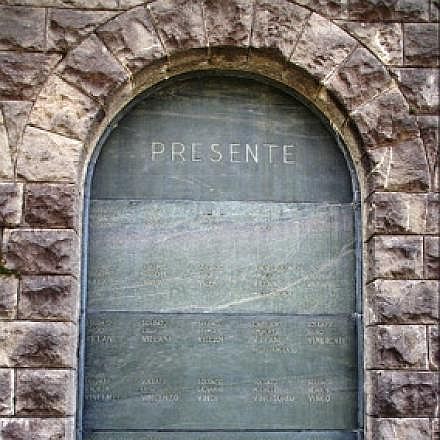
In the United States we observe Veterans Day on November 11, the date of Germany’s formal surrender at the end of World War 1. To be precise, the ceasefire took effect at 11:11 on November 11. We called it Armistice Day when I was a sprout, but now the date recognizes veterans of all wars.
The war between Italy and Austria-Hungary, however, came to an end on November 3, when the ceasefire was signed at the Villa Giusti outside Padova, to take effect on November 4. That date has long been observed here as a national day of remembrance, though by the end of it all, the warring parties had signed no fewer than 16 peace treaties.
It’s bad enough to know who were the casualties, but the nameless ones are what haunt me. In 1921, Italy consecrated its national Tomb of the Unknown Soldier, in Rome, and this year marked its hundredth-year anniversary. There are military shrines (sacrario) all over Italy and it is appalling how many of their soldiers are unknown. The monument in Gorizia notes 57,741 Italian casualties, of which 36,000 are unknown. At the shrine at Redipuglia are 100,000 fallen, and 60,000 unknown. At Asiago are 54,286 dead of which 33,000 are unknown. Obliterated.
Which brings me to the sacrario crowning Monte Grappa. The Grappa massif was the site of some of the war’s most violent battles, and where the Austrian advance into Italy was finally stopped.
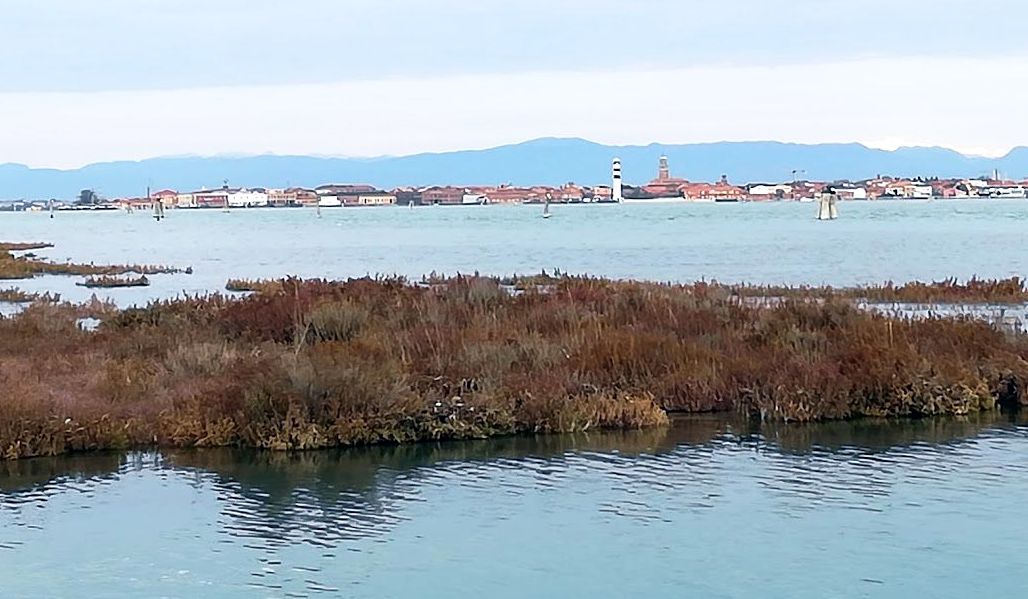
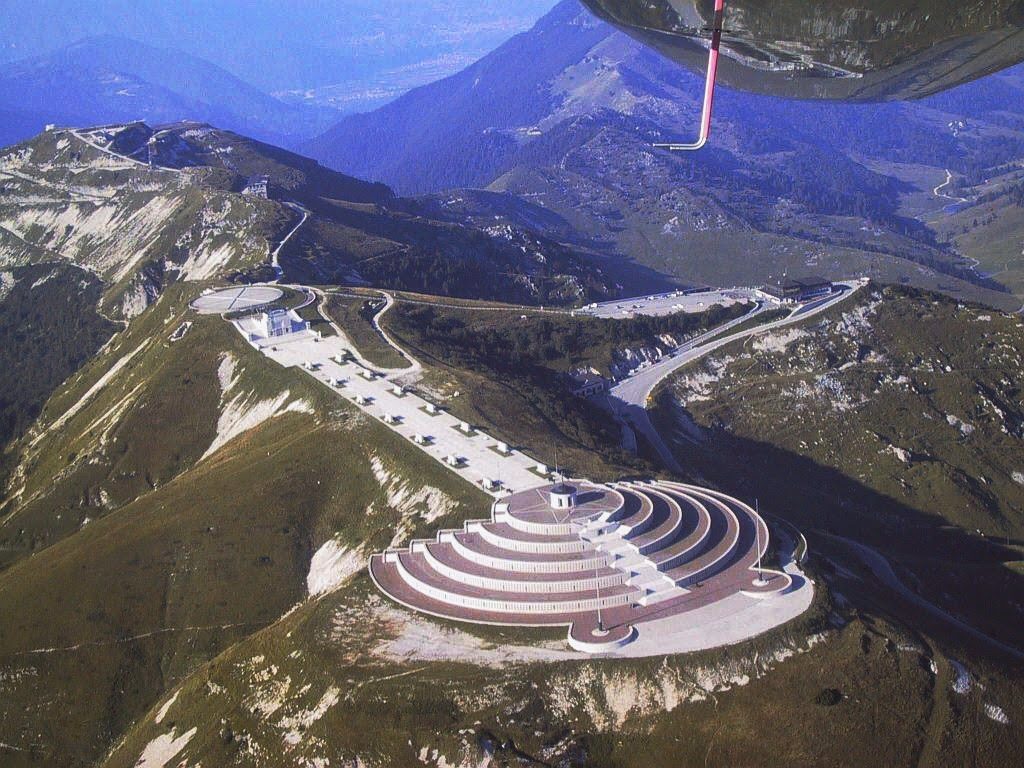

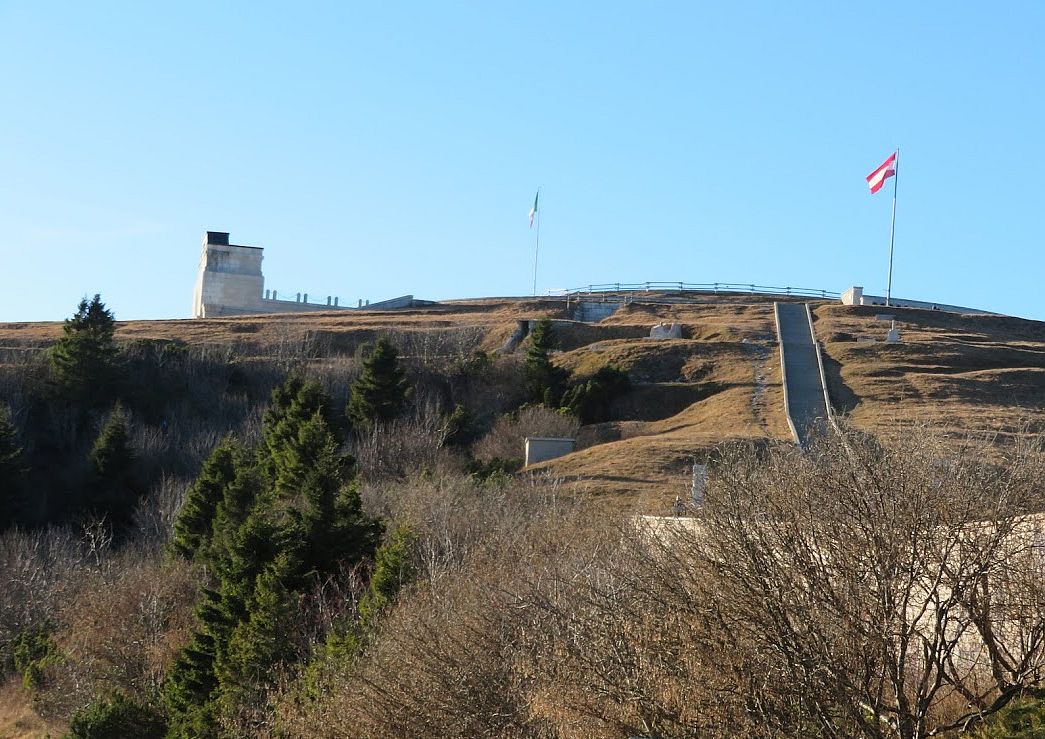

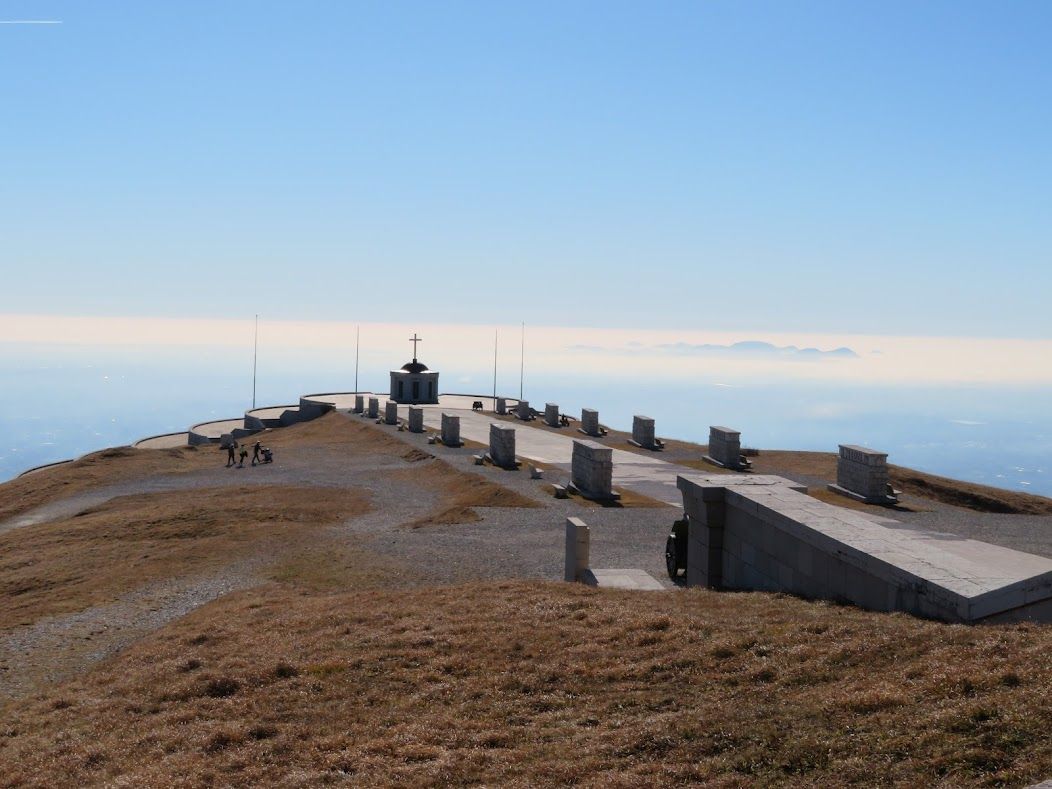
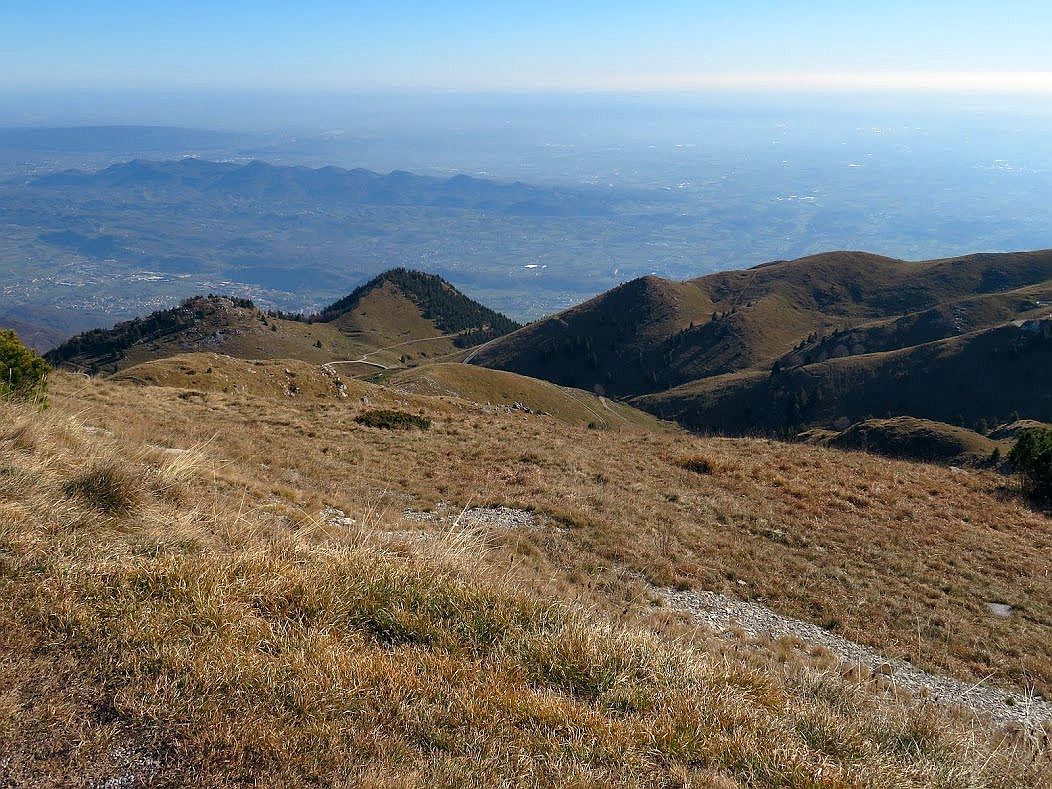
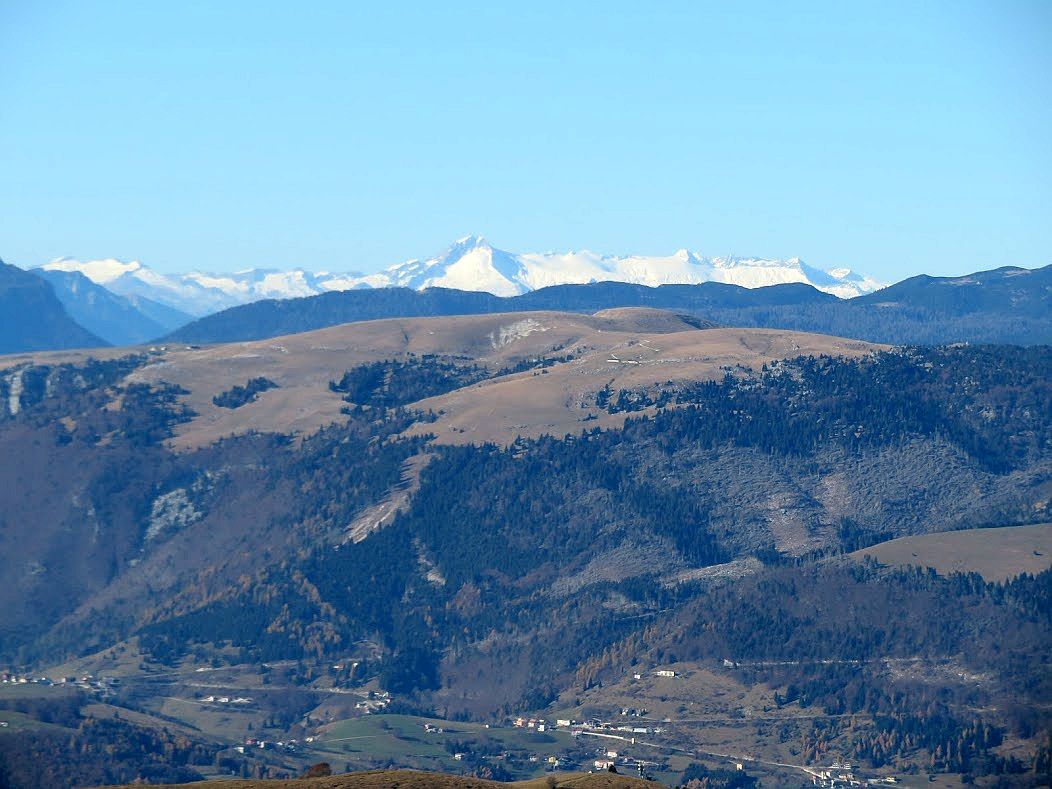
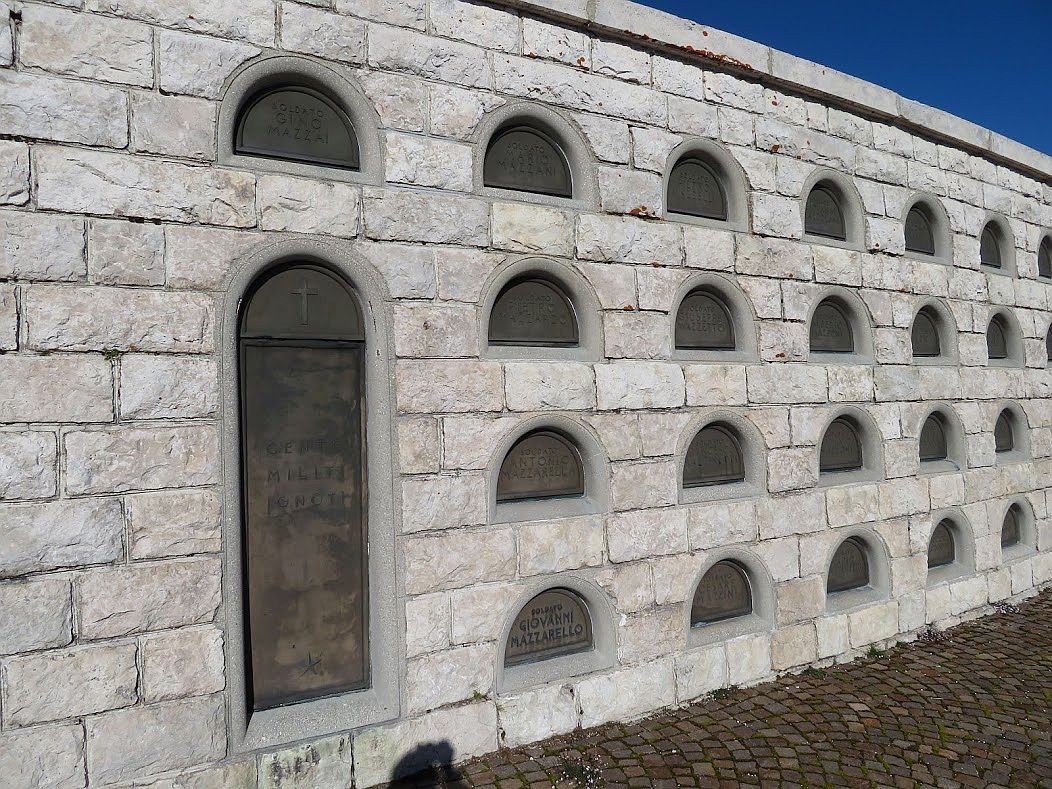
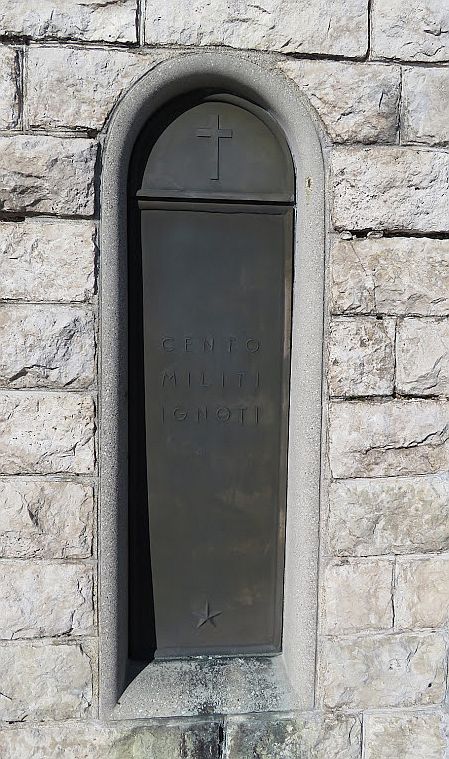
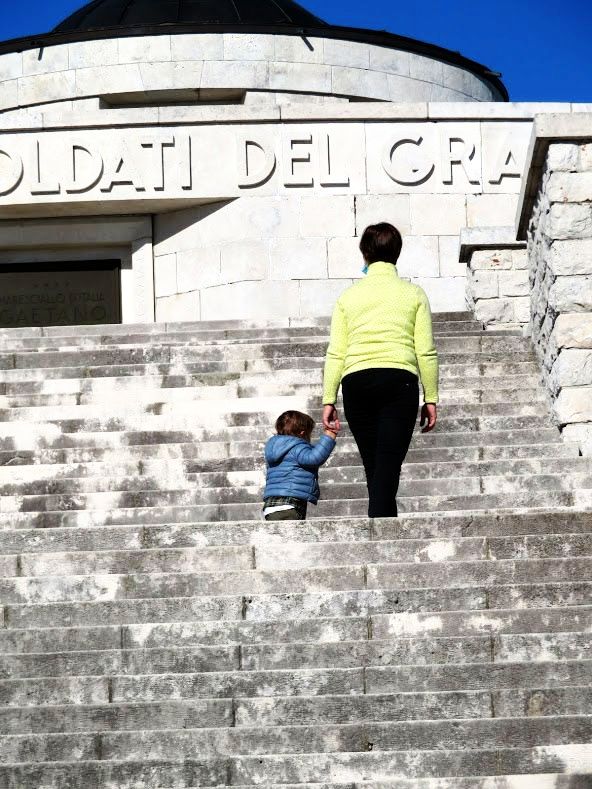
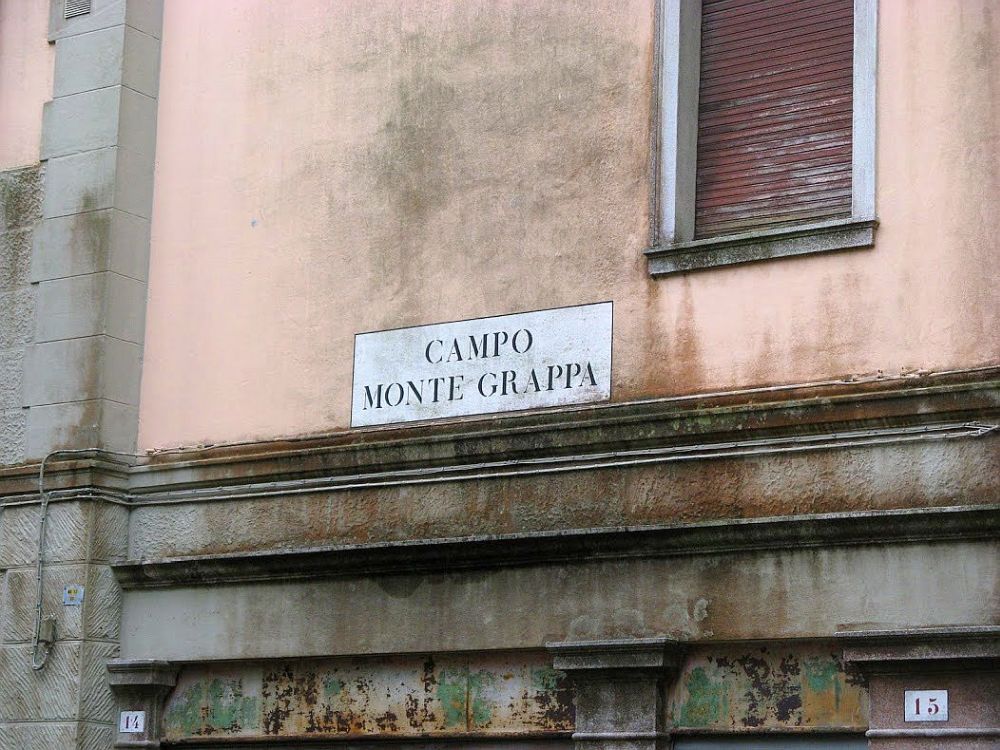
Two weeks ago — the evening of October 29 — a remarkable event passed through Venice in the form of the “Train of Memory,” a steam train that retraced the route of the train that traveled from Aquileia to Rome bearing the coffin of the nameless soldier chosen to represent all of them to his final resting place at the Altar of the Fatherland. As before, the train left Cervignano Aquileia on October 29, stopped at Udine and Treviso, and arrived at Santa Lucia station in Venice at 9:30 PM. A few hours later it departed for Bologna, Florence, Arezzo, and finally Rome.
We waited at the station, determined to see it despite a delay of 90 minutes. A ceremony had been organized, though it was less majestic than those I discovered had been held in other stations. Music, speeches, uniforms. More music. It was moving in spite of all that; for me, the emotion was compounded by the fact that Lino’s father had been a train driver in the steam era, and that Santa Lucia station was once full of puffing, gasping trains just like this one.
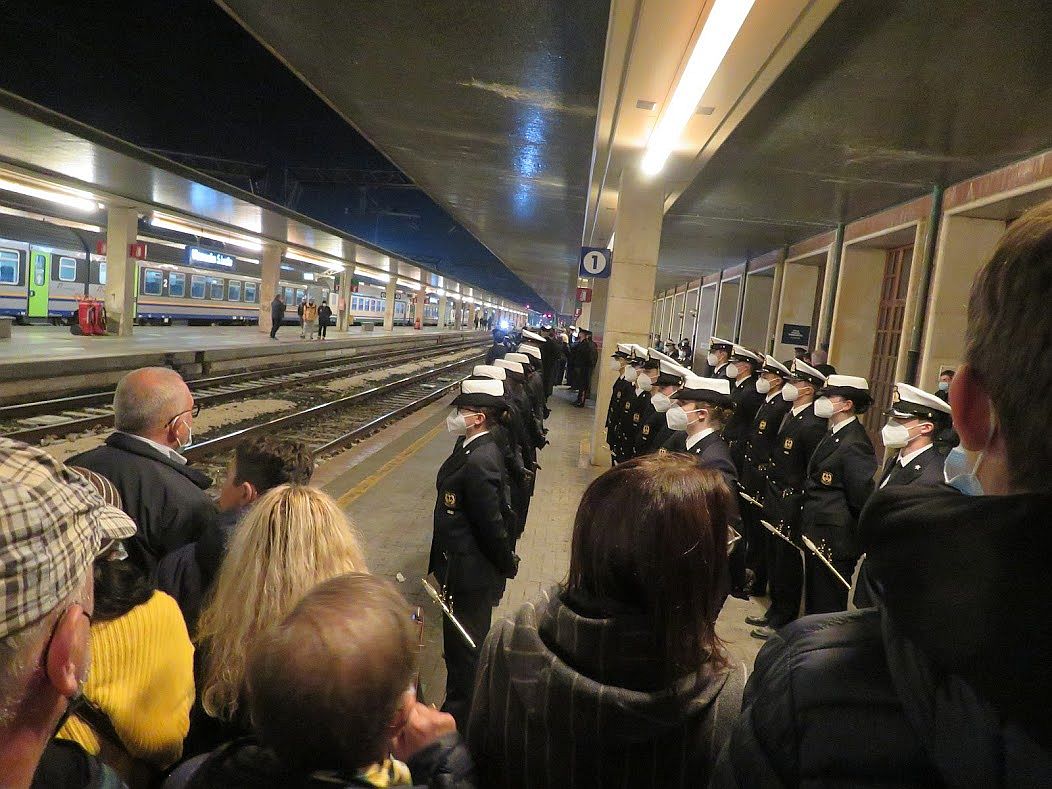
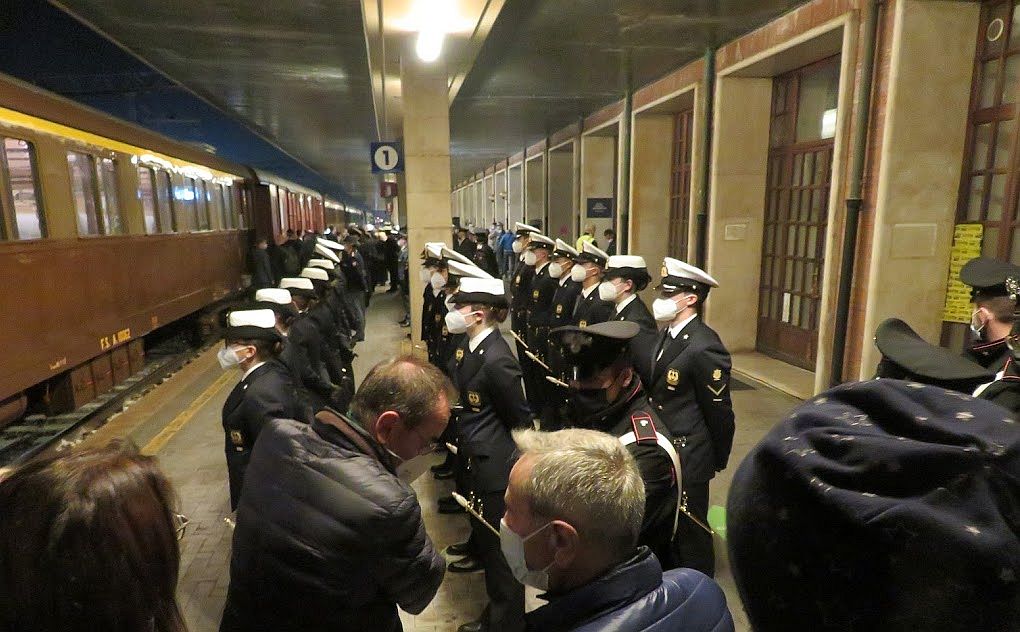
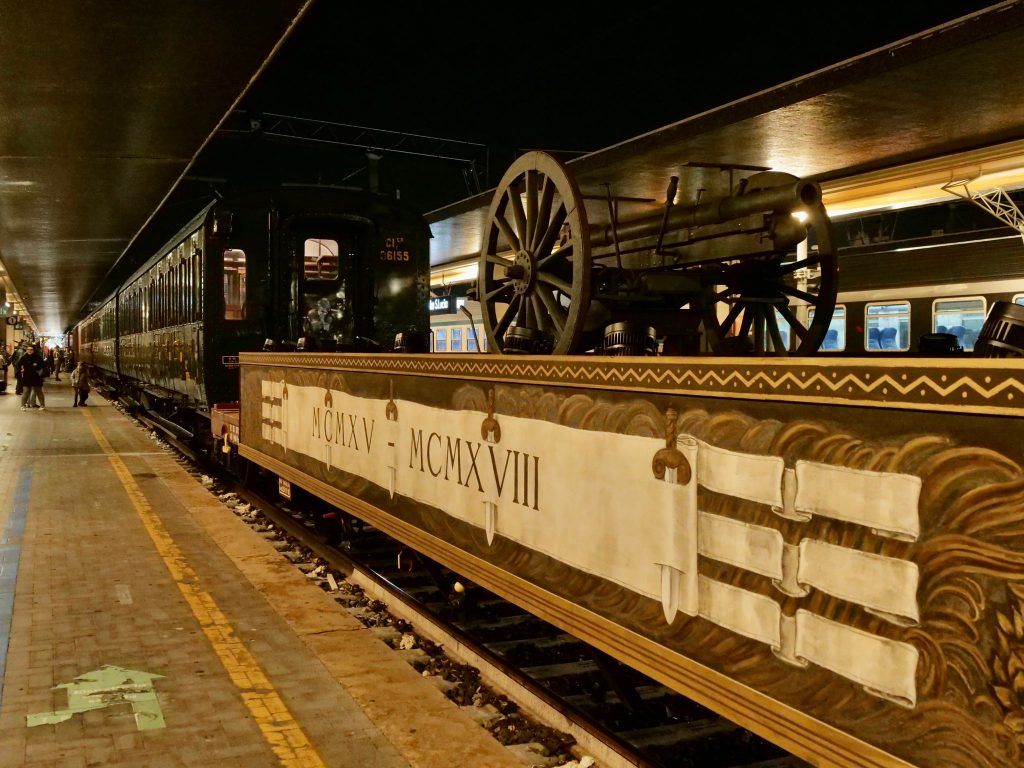
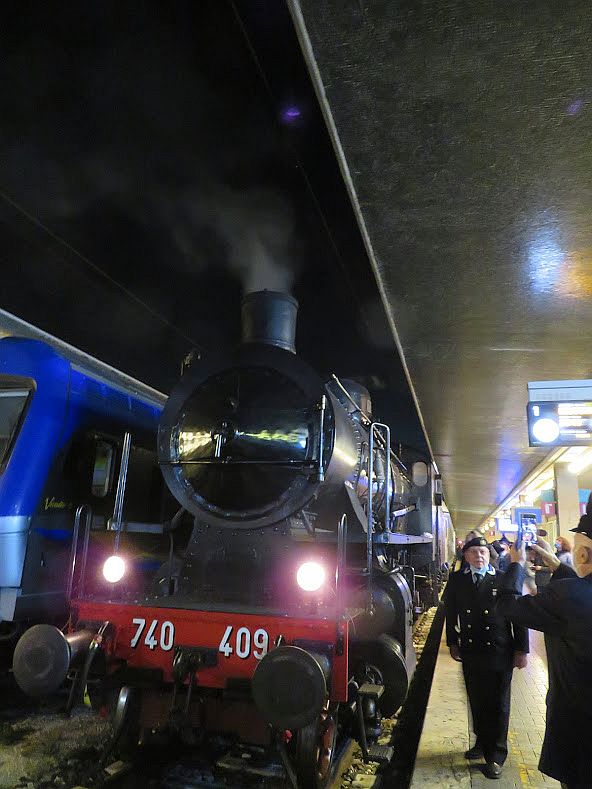
The original train was something infinitely grander and more solemn, of course. This brief film clip shows scenes from the train’s passing towns and stations on its way to Rome, and I trust that even without your understanding the narration, the images will express something of the magnitude of the experience. It seems as though everyone who saw the coffin gave it something from the depths of their heart and spirit, as each person glimpsed, in a way, their own lost soldier.
So where is the monument to the Unknown Soldier in Venice? There is only one and it’s at Sant’Elena, modestly placed amid a sort of garden, a genteel afterthought. For years this piece of stone just sat on the ground till finally a group of former soldiers managed to get it up onto a sort of pedestal. Some cities, such as Florence, organized ceremonies with the laying of a huge laurel wreath.
Here, not so much. The only wreath was placed by Daniele Girardini, president of a military history association named cimeetrincee (peaks and trenches). Not even a nod from the city government, much less a ceremony. Maybe ceremonies are empty calories, but no ceremonies are worse.

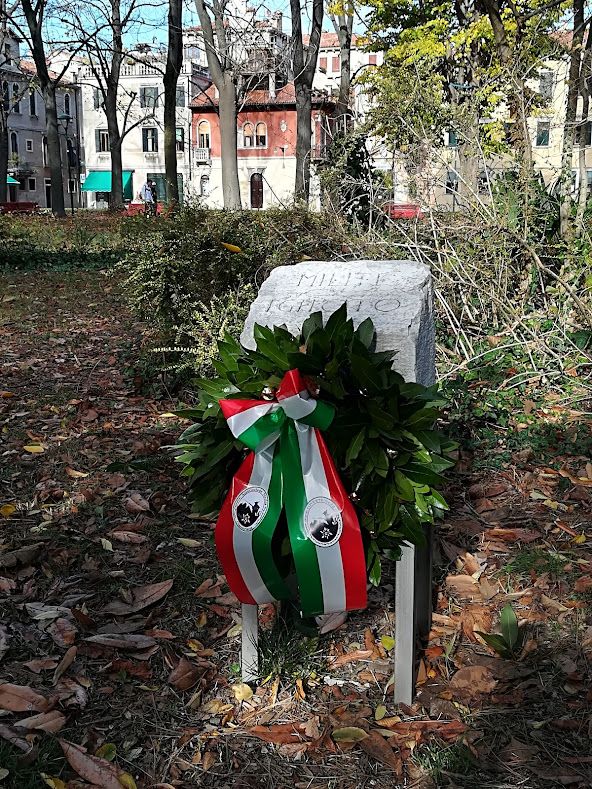

“I was always embarrassed by the words sacred, glorious, and sacrifice, ” wrote Ernest Hemingway. “I had seen nothing sacred, and the things that were glorious had no glory and the sacrifices were like the stockyards at Chicago if nothing was done with the meat except to bury it…Abstract words such as glory, honor, courage…were obscene beside the concrete names of villages… the names of rivers, the numbers of regiments and the dates.”
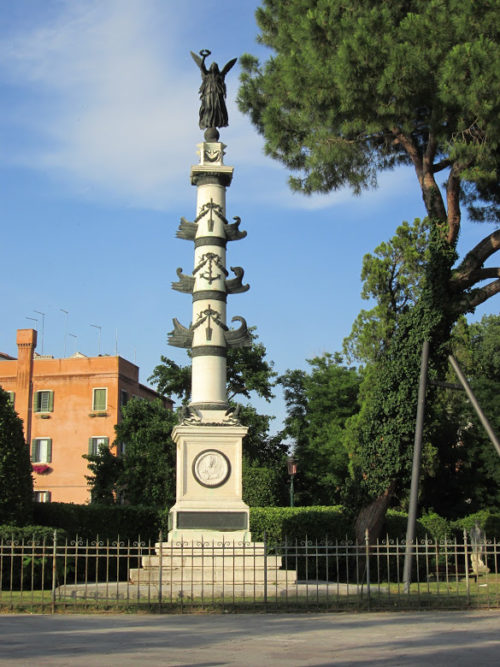
Lately I’ve set aside the subject of Italian naval triumphs in World War 1, but I can’t conclude my exegesis of Thaon de Revel’s document on the Victory Column without mentioning two of the most prodigious Italian naval exploits. It may not surprise you to learn that the extraordinary Luigi Rizzo was involved in the biggest one of all: The “Impresa di Premuda.” There is a reason why he came to be nicknamed “L’affondatore” (the Sinker, as in: He Who Sends Ships to the Bottom).
I’m not proposing that we dwell on the past, nor that we conduct a ceremony every day, but some things deserve to be stored somewhere further forward in our brains.
Third Exploit: The “Impresa di Premuda.” After the Beffa di Buccari, Luigi Rizzo was promoted to capitano di corvetta (lieutenant commander in US naval rank) and went back to his normal military duties. I doubt, though, that he gave any thought to his next assignment, or that it would launch him to more fame, more medals, and the establishing of the date, June 10, as the annual Navy Day. All this happened near Premuda, a Croatian island northwest of Zadar.
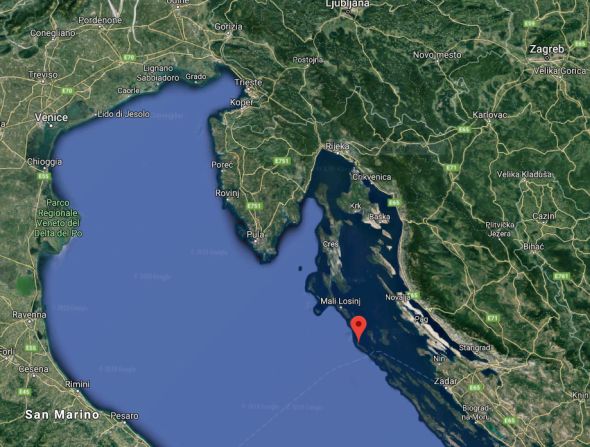
To set the scene: If the Italian navy had spent months patrolling the Adriatic without encountering an enemy ship, as per the remark on the Column, the Austro-Hungarian navy (I’ll just call it Austrian, for simplicity) hadn’t been much more productive.
The Allied forces had created a blockade across the Otranto Channel in 1915, and it effectively trapped the Austrians, keeping their 119 warships out of the action in the Mediterranean. (I will anticipate military experts’ comments by saying I’m aware that submarines were able to elude the blockade and were annoyingly effective at disrupting shipping. But both sides wanted to see something more decisive occur.)
On March 1, 1918, Admiral Miklos Horthy assumed command of the Austrian fleet; Thaon de Revel, the Italian admiral, correctly perceived this change as signifying some new plans, and that they would almost certainly have something to do with the blockade.
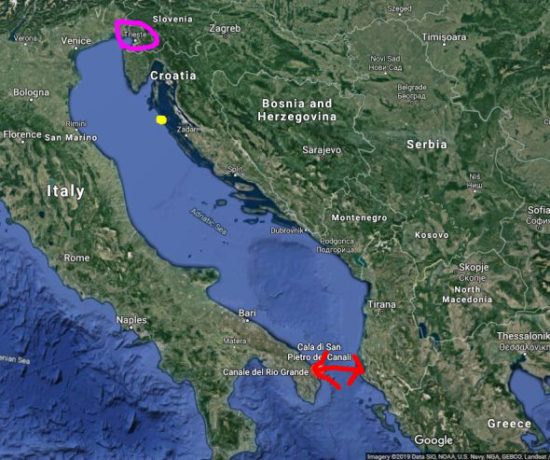
The Allied blockade had been a line of ships stretching 45 miles (72 km) from Brindisi to the Albanian coast just north of Corfu’. Battles and skirmishes ensued –the blockade was attacked 19 times — but the situation remained unresolved until 1918, when the Allies managed finally to stretch a physical blockade of nets and buoys across the entire channel. The Austrians had had enough, and were determined to settle the matter.
So in June, 1918, Admiral Horthy decided to dedicate most of his fleet to an all-out attack on the blockade. I won’t list all the components, which were many, but the stars of the operation were four monster dreadnoughts, the largest and most modern yet constructed: Tegetthoff and Szent Istvan (Santo Stefano) together with an escort, and Prinz Eugen with Viribus Unitis deployed nearby. What could possibly go wrong?
At 10:30 PM on June 8, the Austrian fleet left its safe harbors and began steaming down the Adriatic toward their intended surprise attack. They were a little behind schedule, but everything was going well until 3:00 AM on June 10 as Szent Istvan and Tegetthoff neared the island of Premuda. Luigi Rizzo saw them first.
Rizzo, together with MAS 21 (Giuseppe Aonzo commanding) was at the end of a routine patrol; his orders were to stay near Premuda until 2:00 AM on June 10, and after dawn to rejoin his support destroyers. They, like their commanders, knew nothing of the Austrian fleet’s approach (hence “surprise,” as noted).
At 3:15 AM, the Austrian convoy began to traverse the zone that the two MAS had been patrolling, at which point Rizzo descried, through the darkness, an enormous cloud of black smoke. He immediately realized it had to be coming from enemy ships. As he reported later, “I decided to profit by the uncertain light to prevent an attack and so I reversed my course, followed by MAS 21, toward the enemy. As I got closer, I realized that we were dealing with two huge ships escorted by 8 to 10 destroyers…”.

Did Rizzo contact his superiors to request orders? Did he call a committee meeting to discuss options? Did he ask himself if he was dreaming? Of course not. As he said, he turned around and began to move toward them, slowly, to avoid creating any telltale white wake, aiming straight between the two destroyers at the head of the convoy which were protecting Szent Istvan and Tegetthoff.
Naturally no Austrians had been on the lookout for any insane little Italian torpedo boats, so Rizzo managed to get as close as 300 meters (984 feet) from Szent Istvan‘s starboard side when he launched both of his torpedoes. They struck mortal blows to the massive ship; water penetrated the engine rooms at bow and stern and fire broke out in the boiler room. As Rizzo fled, the nearer destroyer immediately opened fire and began to pursue him; Rizzo, out of torpedoes, launched two anti-submarine bombs, one of which exploded and the destroyer desisted.
Aonzo, on MAS 21, was less fortunate; his torpedo struck Tegetthoff, but didn’t explode. But he too escaped the pursuing destroyer.
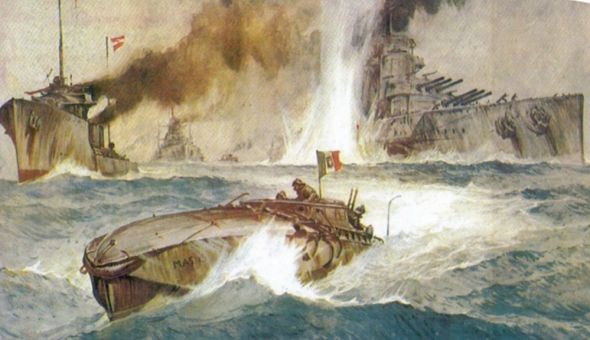
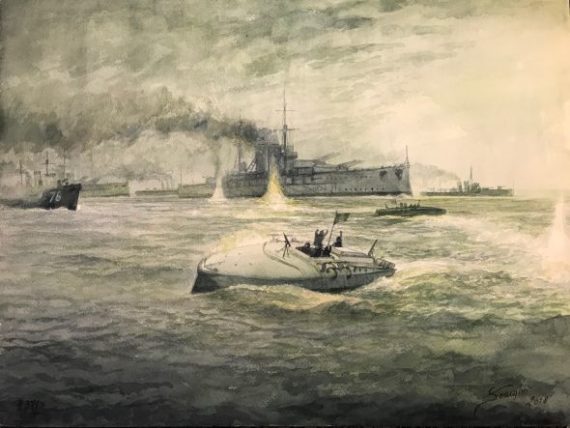
At 6:05 the 21,700-ton Szent Istvan, pride of the Austrian navy, began to list and after desperate attempts to keep her upright, finally capsized and sank beneath the waves.
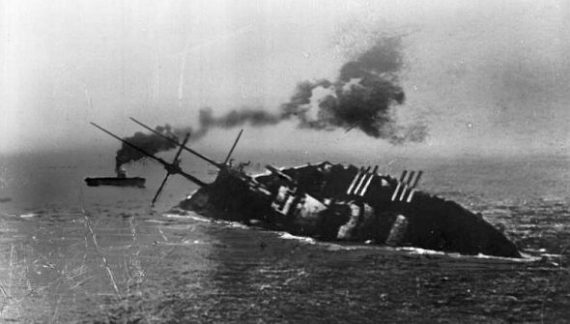
https://www.youtube.com/watch?v=fYkMGom8KSg
At 7:00 AM the two MAS were in Ancona and the secret enemy attack was no longer a secret. Seeing that the Austrians had been counting on surprise as their greatest weapon, Admiral Horthy ordered the entire convoy to turn and head back toward home and safety. The Tegetthoff reached Pola at dawn the following day, June 11, and the squadron accompanying Viribus Unitis/Prinz Eugen pulled in at 7:00 PM. For the Austrian fleet, the war was over; the stunning psychological blow meant that their ships never left port again.
Let me pause to let all that sink in. A couple of men and two little boats not only brought the Austrian fleet to a complete halt, they thereby altered the Allied naval plans and operations in the entire Mediterranean. Not as dramatic as an all-out battle, but they got the job done in less time and with a lot less waste of everything.
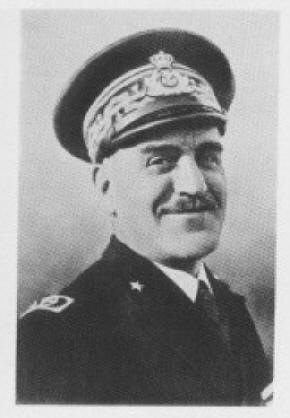
Rizzo was honored by the King of Italy with the Knight Grand Cross of the Military Order of Savoy, but because of his republican ideals he politely declined. He was decorated instead with the Gold Medal of Military Valor (not his first), and reported for duty the next day, I expect.
By the time his career concluded in 1941 he had risen to the rank of admiral, and had been given the victory title of Count of Grado and Premuda. France awarded him the Croix de guerre and made him a knight of the Legion of Honor; the United Kingdom bestowed the Distinguished Service Order; the United States gave him the Navy Distinguished Service Medal.
But it gets better. Admiral Miklos Horthy, commander-in-chief of the Austrian fleet in World War 1 and leader of the convoy headed by the Szent Istvan, became Regent of the Kingdom of Hungary, and awarded Rizzo the Royal Hungarian Order of Saint Stephen. Worthy adversaries, both of them.

Fourth Exploit: The “Impresa di Pola.” This feat does not involve Luigi Rizzo, but don’t stop reading because of that.
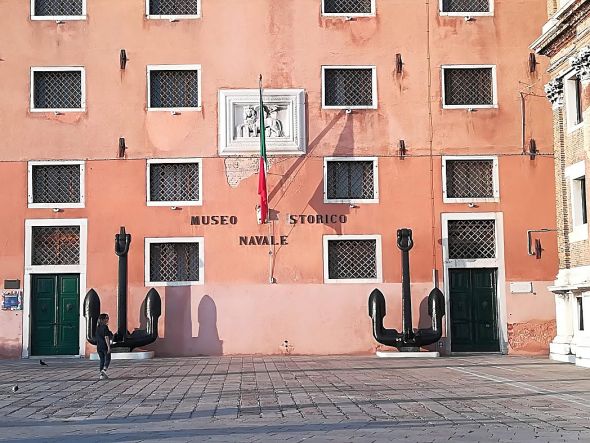
To recapitulate: After Rizzo put paid to the entire Austrian fleet, the three remaining monster battleships of the failed June expedition were harbored in Pola. As 1918 progressed, the Austrian government began to focus on the prospect of defeat, and on October 31 officially transferred Viribus Unitis, renamed Yugoslavia, to the newly formed State of Slovenes, Croats and Serbs in order to avoid having to surrender the ship to the Allied powers.
Their satisfaction in so cleverly depriving the enemy of this prize was short-lived, because 24 hours later two dauntless Italian naval officers slipped into the harbor at Pola and rendered the magnificent vessel, bearing whatever name you want, null and void.
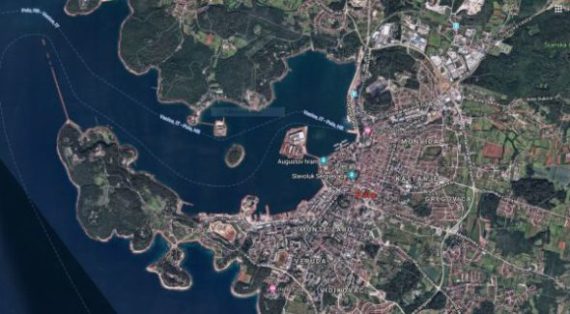
The timing of this adventure was unfortunate, as negotiations were underway toward an armistice which was signed at the Villa Giusti near Padova on November 3, 1918; the ceasefire was to go into effect November 4. But over on the Adriatic it was still war until further notice.
So on the night of November 1, 1918, Raffaele Paolucci and Raffaele Rossetti each took hold of a new device called a mignatta, an ingenious motorized underwater torpedo-like cylinder (constructed in the Arsenal in Venice) which rapidly carried them underwater past sentinels, patrol boats and even a submarine. After six hours in the water, they were finally close to the Viribus Unitis. At 5:30 they managed to attach the 200-kilo bomb to the ship’s hull, programmed to explode at 6:30. No escape, though — searchlights found them and they were captured.
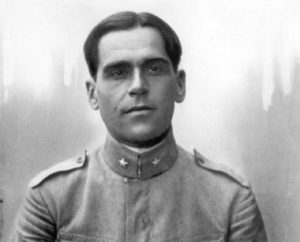
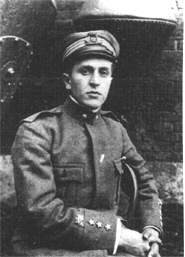

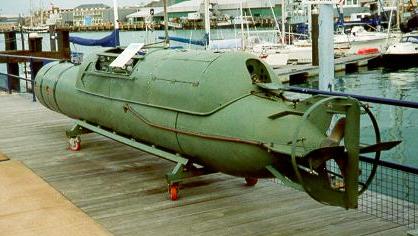
At 6:00 they advised the commander of Viribus Unitis that the ship was mined and would explode at 6:30; the crew was ordered ashore, Paolucci and Rossetti were sent as prisoners to the nearby Tegetthoff, the bomb didn’t explode, the crew returned, and the bomb detonated at 6:44 leaving 300 men either dead or lost, including the captain, and sinking the ship (obviously).
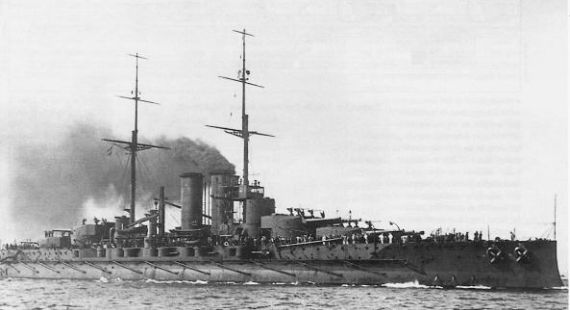
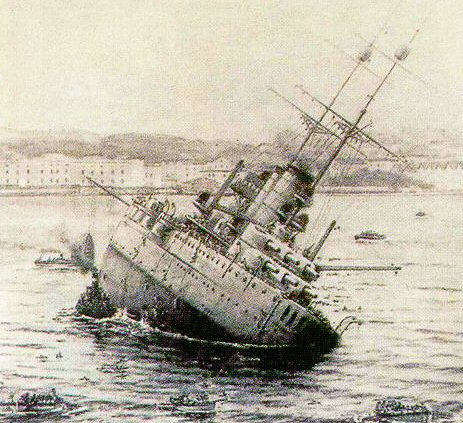
On November 5 the Italian Royal Navy occupied the port of Pola and freed Paolucci and Rossetti.
The fate of the dreadnoughts: Szent Istvan was gone forever; the wreck of the Viribus Unitis was salvaged and broken up between 1920 and 1930; Prinz Eugen was ceded to France where she was sunk as a target ship in 1922; and the Tegetthoff was given to Italy and scrapped between 1924 and 1925.
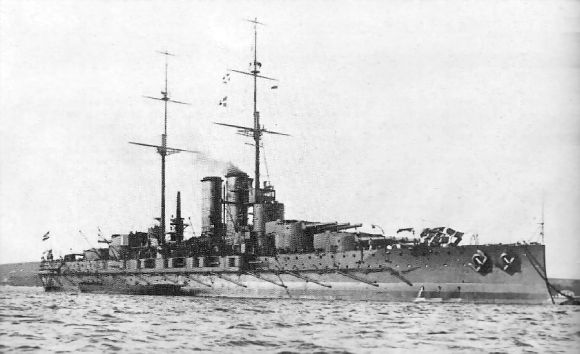
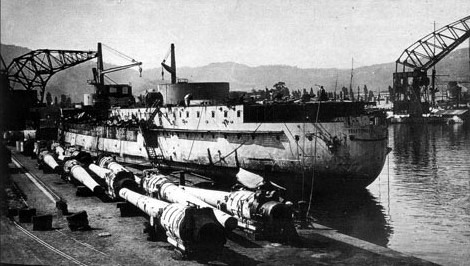
Luigi Rizzo died in 1951, two months after an operation to remove a tumor on his lung. The surgeon was none other than his friend and fellow dreadnought-slayer, Raffaele Paolucci.
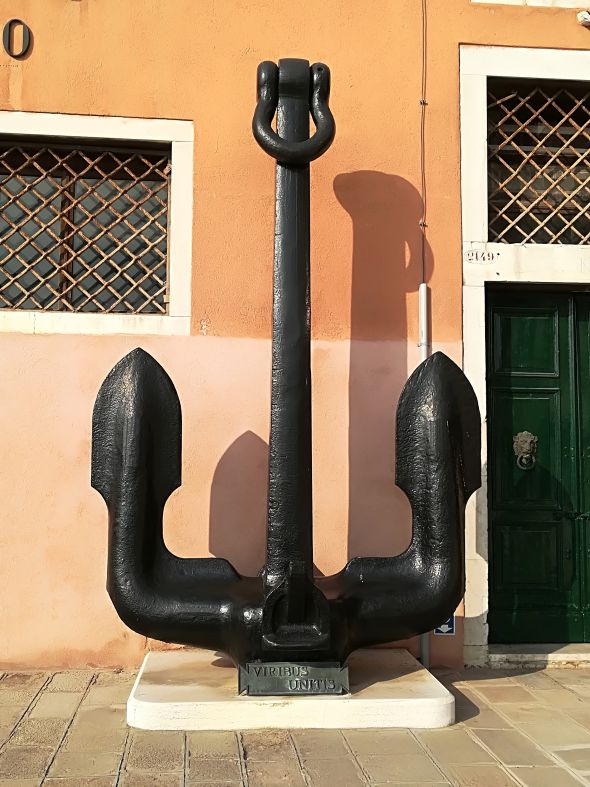
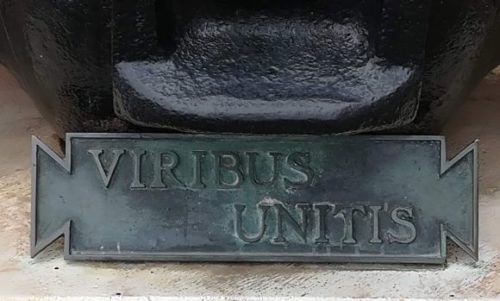
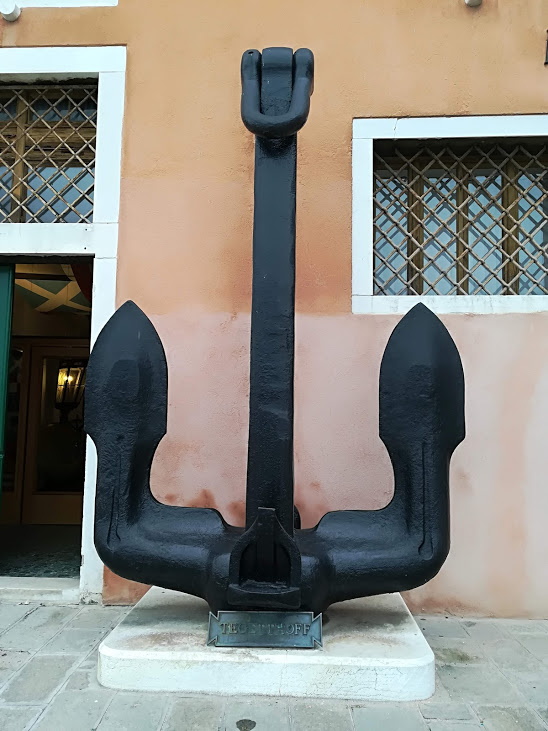
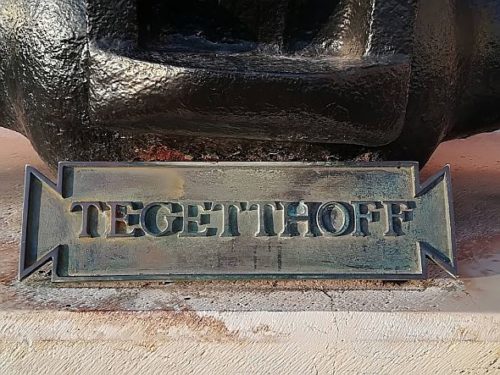

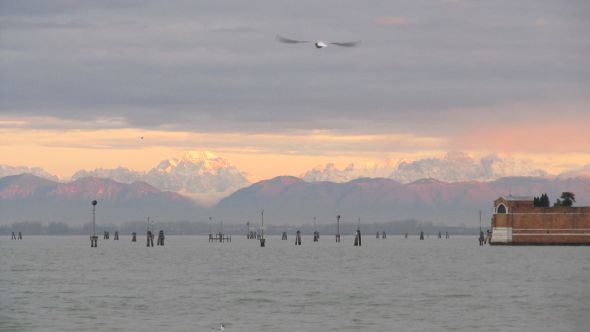
This is a date which has sunk somewhere below the waterline of general knowledge, but in Italy it still carries serious significance. By which I don’t imply that people commemorate it or talk about it, but it remains one of those watershed dates in European/national/sometimes individual history.
I bring it up — today being September 8 — not to indulge in a monologue about politics and World War II, but because Lino’s father was briefly and importantly involved.
The barest outline is this, with apologies to true experts and connoisseurs of all the fine points: Italy and Germany were allies at the outbreak of the war. The war was going very badly for Italy because it had begun to go badly for Hitler, so Hitler essentially abandoned his Italian so-called friends. Abandoned (as noted), the Italian government decided to forego large amounts of futile bloodshed, and asked the Allies (more particularly General Eisenhower) for an armistice. One of the conditions of this surrender was that the Americans would land on the Italian mainland. It was an excellent plan; the armistice, known as the Armistice of Cassabile, was duly signed on September 8, 1943. All this was kept as secret as possible for reasons which even I can grasp.
Except that secrets are tricky. The change of label from “enemy” to “friend” or vice versa worked fine on paper, but nobody told the army this was going to happen. Came the dawn on September 9, and the troops didn’t know who they were supposed to be fighting anymore. Even their generals, who were similarly blindsided, basically told their men “Do what you want, we have no idea what’s going on.” So the armed forces disbanded, just like that, every man for himself. Most just ran away somewhere (not to be confused with “running away”); many headed for home, a good number struck out for the mountains to hide and become guerrilla partisans. Not everybody made it, however.
The Germans saw the Italians as traitors, i.e. adversaries, and proceeded to occupy the peninsula, up to and including Venice. And here, as elsewhere in Italy, the Germans began to round up all the Italian soldiers they could find to cart them away to Germany as prisoners. Ships were engaged to hold the growing collection as the Germans went up and down the Adriatic coast seeking Italian deserters. Some of those ships were in Venice.
Therefore, one day in this turbulent and panicky period, a ship was moving along the Giudecca Canal, sailing away with its load of Italian troops, destination: Depths of Hell. Some of the prisoners decided to risk an escape, and jumped overboard. And that day Lino’s father was rowing back home from an interlude of fishing (there were ten mouths at home to feed), and was crossing the Giudecca Canal when he saw one man hit the water.
Lino’s father rowed over (I don’t know how far he had to go), pulled the man into his boat and threw a spare jacket on him as a makeshift disguise. He rowed the man home and hustled him upstairs. His name was Mario Dossi, and he was from Naples. Lino says they used to have a photo of him standing with Lino’s brother, Puccio, on the Ponte della Paglia near the Piazza San Marco.
But the apartment was small (Lino’s sister still lives there, and it’s perfectly fine for one person. But not for ten — or rather, eleven.) Some ladies down the street took Mario in, and there the story ends.
Except that it’s a happy ending, because some time after the war, one of Lino’s sister’s boyfriends was in Naples, and looked Mario up. So he was fine.
A substantial number of films, some of them famous classics, deal with the war and Italy after the fateful September 8. Their common theme is brutality, as you might expect. I’ve seen Spike Lee’s “Miracle at Sant’Anna” (one of many massacres committed as reprisals). “Captain Corelli’s Mandolin” follows the same thread of warfare between the Italians and Germans after September 8 in Greece. In my opinion, two films on this theme that belong in the pantheon of great cinema, however, are “Everybody Go Home” with Alberto Sordi (“Tutti a Casa”), and “The Two Marshals” with Vittorio de Sica and Toto’ (“I Due Marescialli”), if for nothing else than the divine scene of the German colonel and the unidentifiable fart.
If you can see those movies, you’ll be glad. Just remember that there wasn’t anything funny about September 8. But be glad for Mario Dossi.
